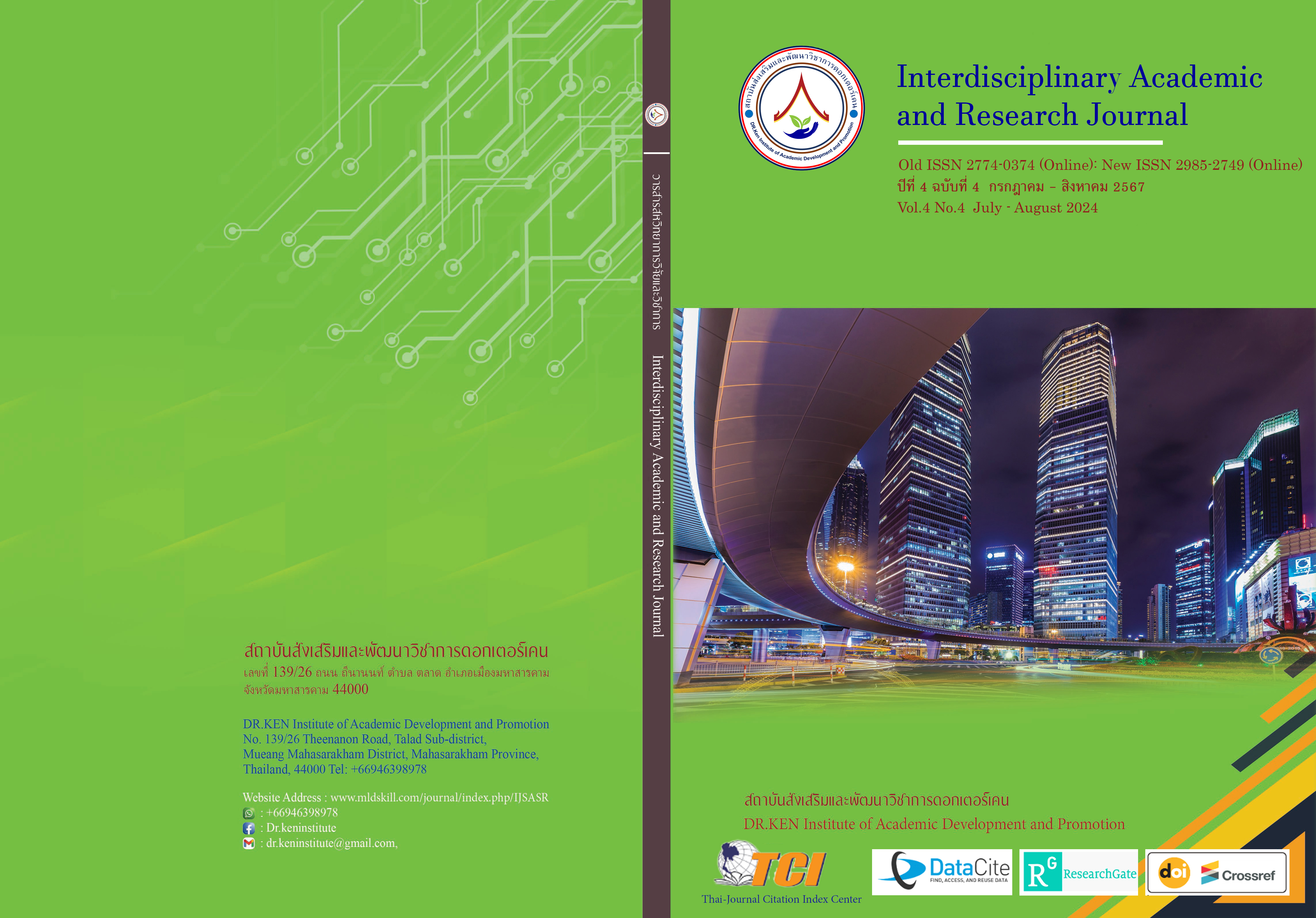Developing Practice-Based Learning Activities to Enhance Fashion Design Skills Using Local Products for Fine Arts Students
DOI:
https://doi.org/10.60027/iarj.2024.276821Keywords:
Practice-Based Learning Activities; , Fashion Design Skills; , Local ProductsAbstract
Background and Objectives: The implementation of practical activities at the higher education level must provide students with opportunities to practice and derive lessons learned from those activities, particularly in courses related to design. Practice-based learning activities aim to train students to learn from various contexts and design learning experiences directly and indirectly, fostering creativity and design capabilities. This research aims to 1) develop practice-based learning activities, 2) compare fashion design skills using local products, and 3) study student satisfaction with learning activities.
Research Methodology: The target groups comprised 3 experts selected through purposive sampling and 11 second-year Fine Arts students enrolled in the second semester of the 2023 academic year. Research tools included practice-based learning activities to promote fashion design skills using local products, the syllabus for the course "Fashion Design from Local Products" (FA 2106214), a fashion design skills using local products assessment form, and a satisfaction assessment form for learning activities using practice-based learning. Statistical analyses included content validity ratio (E1/E2), mean values, and differences (D).
Research Findings: 1) Practice-based learning activities consisted of 4 learning units and 14 sub-activities with a content validity ratio of 4.61, indicating excellent quality. The efficiency ratio (E1/E2) was 86.48/80.00, meeting the criteria of 80/80. 2) Overall, second-year Fine Arts students showed a significant improvement in fashion design skills after the intervention (D = +4.82). 3) Second-year Fine Arts students expressed the highest level of satisfaction with practice-based learning activities.
Conclusion: This research demonstrates that practice-based learning activities can help students create and design various works. Moreover, students expressed the highest level of satisfaction with practice-based learning activities in all aspects.
References
ชลิตา มิ่งขวัญ. (2563). การพัฒนากิจกรรมการเรียนรู้จากการปฏิบัติการในชั้นเรียน เพื่อส่งเสริมความสามารถในการออกแบบเว็บสำหรับการฝึกอบรมออนไลน์ของนักศึกษาปริญญาตรี คณะศึกษาศาสตร์ มหาวิทยาลัยศิลปากร. วิทยานิพนธ์ศึกษาศาสตรมหาบัณฑิต : มหาวิทยาลัยศิลปากร.
ทวีศักดิ์ สาสงเคราะห์. (2551). การออกแบบและพัฒนารูปแบบบรรจุภัณฑ์จากผ้าไหมสุรินทร์. รายงานวิจัย : มหาวิทยาลัยเทคโนโลยีราชมงคลพระนคร.
บุญมา เวียงคํา และเสนอ ภิรมจิตรผ่อง. (2560). การพัฒนารูปแบบการจัดกิจกรรมการเรียนรู้เชิงประสบการณ์เพื่อเสริมสร้างจิตสาธารณะของนักเรียนระดับชั้นมัธยมศึกษาตอนปลาย. วารสารมนุษยศาสตร์และสังคมศาสตร์ มหาวิทยาลัยราชภัฏอุบลราชธานี, 8(2), 13-26.
พิศุทรุ คิริพันธุ์. (2559). การออกแบบผลิตภัณฑ์โดยการผสมผสานกับวิถีของชุมชนอย่างยั่งยืน. 8 ทศวรรษ วนศาสตร์ ศาสตร์แห่งชีวิต. กรุงเทพฯ: ศูนย์วิจัยป่าไม้.
รวิวรรณ สุขเจริญ. (2562). การพัฒนาความสามารถในการออกแบบผลิตภัณฑ์เชิงสร้างสรรค์ด้วยวิธีการเรียนรู้เชิงผลิตภาพของนักเรียนชั้นมัธยมศึกษาปีที่ 2. วิทยานิพนธ์ศึกษาศาสตรมหาบัณฑิต สาขาวิชาหลักสูตรและการนิเทศ : มหาวิทยาลัยศิลปากร.
สุวิทย์ วงศ์รุจิราวาณิชย์. (2560). เจาะลึกเทรนด์ Coworking Space. Retrieved on 15 December 2023. from http://www.tcdc.or.th./coworking.
อิ่มจิตร หมวดแร่, สุนทร อ่อนฤทธิ์, และ ชัยรัตน์ โตศิลา. (2565). การพัฒนากิจกรรมการเรียนรู้อาเซียนศึกษาโดยใช้แนวคิดการเรียนรู้แบบกิจกรรมเป็นฐานเพื่อส่งเสริมสมรรถนะการเป็นพลเมืองที่เข้มแข็งของนักเรียนระดับมัธยมศึกษาตอนปลาย. วารสารวิชาการคณะมนุษยศาสตร์และสังคมศาสตร์มหาวิทยาลัยราชภัฏเทพสตรี, 13(3), 1-16.
University of South Australia. (2018). Practice_based learning. Retrieved on 17 December 2023. from http://w3.unisa.edu.au/academicdevelopment/engagement/practice.asp.
Downloads
Published
How to Cite
Issue
Section
License
Copyright (c) 2024 Interdisciplinary Academic and Research Journal

This work is licensed under a Creative Commons Attribution-NonCommercial-NoDerivatives 4.0 International License.
Copyright on any article in the Interdisciplinary Academic and Research Journal is retained by the author(s) under the under the Creative Commons Attribution-NonCommercial-NoDerivatives 4.0 International License. Permission to use text, content, images, etc. of publication. Any user to read, download, copy, distribute, print, search, or link to the full texts of articles, crawl them for indexing, pass them as data to software, or use them for any other lawful purpose. But do not use it for commercial use or with the intent to benefit any business.
















.png)


